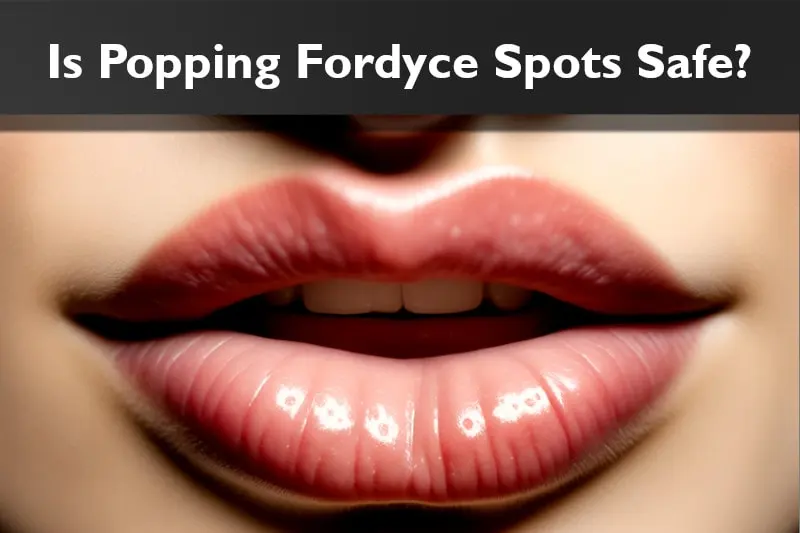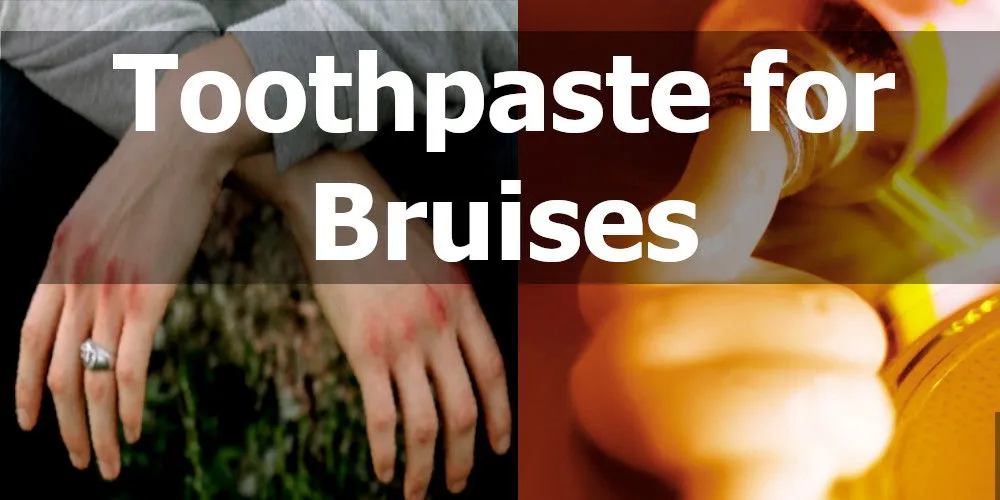4 Main Causes of Fordyce Spots: Unraveling the Mystery
Fordyce Spots – those tiny, pale, often yellowish bumps that can appear on our skin, particularly in areas like the mucous membrane and oral mucosa. W
hile they might seem unusual at first glance, these spots are more common than one might think. Characterized by their milium-like appearance, Fordyce Spots often raise questions due to their sudden emergence. But what exactly leads to their appearance?
In this exploration titled “Uncovering the Causes Behind Fordyce Spots,” we aim to shed light on the origins of these natural skin occurrences, ensuring you have a comprehensive understanding of what they are and why they manifest.
Join us as we delve deep into the “Causes of Fordyce Spots” and demystify this common yet often misunderstood skin phenomenon.
What are Fordyce Spots?
As we delve deeper into the “Causes of Fordyce Spots,” it’s essential first to define and understand what these spots truly are. Fordyce Spots are small, raised, whitish or yellowish bumps on the skin that bear a striking resemblance to milium, those tiny cysts that can sometimes appear on our face and body. But unlike milium, Fordyce Spots have a unique origin and set of characteristics.
One of the most common places you’ll find these spots is inside the mouth, particularly along the line of the teeth, extending as far back as the last molar. They can also be prominently seen on the lips, especially on the delicate transition area between the lip and the adjacent skin. This occurrence on the oral mucosa and buccal mucosa often leads to curiosity and sometimes concern.
In terms of their appearance, Fordyce Spots can vary in size and color. They can be as minuscule as a pinpoint or slightly larger, resembling the size of a pinhead. Their color palette ranges from pale buff to an oatmeal shade, making them blend with the skin but still noticeable upon closer inspection.
While these spots might seem out of place or cause for concern, understanding their nature is the first step in demystifying them. As we continue to uncover the causes behind these spots, remember that they are a natural part of our skin’s landscape and are more common than they might seem at first glance.
Causes of Fordyce Spots

As we journey through “Uncovering the Causes Behind Fordyce Spots,” understanding the root causes of these unique spots is paramount. While they might seem unusual, several factors contribute to their appearance. Let’s delve into the primary reasons behind the emergence of Fordyce Spots:
1. Natural Occurrence
At their core, Fordyce Spots are a natural part of our body’s anatomy. These spots are essentially ectopic sebaceous glands, which means they are oil glands that have manifested in areas where they typically aren’t found. While their appearance might be surprising to some, they’ve always been a part of our skin’s intricate design.
2. Ageing
Time spares no one, and as we age, various changes occur in our skin. One such change is the increased visibility of Fordyce Spots. As the years advance, these spots can become more pronounced, leading many middle-aged individuals to notice them more prominently than before.
3. Trauma
While trauma or injury isn’t a direct cause of Fordyce Spots, it’s essential to note that any skin disruption can lead to various conditions or changes. Sometimes, these changes, especially if they involve the sebaceous glands, can be mistaken for Fordyce Spots or even make existing spots more noticeable. It’s always wise to monitor any skin changes following trauma and seek professional advice if needed.
4. Hormonal Changes
Our body’s hormones play a pivotal role in our overall health, including the health of our skin. Fluctuations in hormone levels, especially during significant life events like puberty, pregnancy, or menopause, can lead to a myriad of skin conditions. While the direct correlation between hormones and Fordyce Spots isn’t entirely established, many experts believe that hormonal shifts can influence their appearance.
In essence, while Fordyce Spots might raise eyebrows due to their unique appearance, understanding their causes offers clarity and peace of mind. These spots are a testament to the complexity and wonder of our skin, and recognizing their origins helps demystify their presence.
Common Misconceptions Surrounding Fordyce Spots
In our quest to understand the “Causes of Fordyce Spots,” it’s equally crucial to address the myths and misconceptions that often surround them. These spots, though common, are frequently misunderstood, leading to unnecessary concerns and misconceptions. Let’s set the record straight on some of the most prevalent myths:
Not a Disease: One of the most common misconceptions is referring to Fordyce Spots as “Fordyce’s disease.” This term is a misnomer and can be misleading. Fordyce Spots are not a disease, nor are they indicative of any underlying health condition. They are simply a manifestation of ectopic sebaceous glands on our skin. Labeling them as a “disease” can cause undue worry and confusion. It’s essential to understand that these spots are a benign and natural part of our skin’s anatomy.
Not Contagious: Another myth that often circulates is the idea that Fordyce Spots are contagious. This belief couldn’t be further from the truth. These spots are not caused by any virus, bacteria, or fungus, and they cannot spread through contact. Whether it’s a handshake, a kiss, or any other form of physical touch, you cannot “catch” or “transfer” Fordyce Spots. They are a personal aspect of one’s skin and are not influenced by external contact with others.
In the vast realm of skin conditions, misconceptions can easily arise. By understanding the true nature and causes of Fordyce Spots, we can approach them with clarity and confidence, free from the myths that might cloud our judgment.
Diagnosis and Treatment of Fordyce Spots
As we continue our exploration into the “Causes of Fordyce Spots,” it’s essential to touch upon their diagnosis and potential treatments. Understanding how these spots are identified and what options are available can offer clarity and peace of mind to those who encounter them.
Diagnosis
One of the primary ways Fordyce Spots are identified is through a straightforward visual examination. Dermatologists and medical professionals can typically recognize these spots based on their characteristic appearance.
Their distinct color and pattern, especially on the oral mucosa and buccal mucosa, make them easily distinguishable from other skin conditions. There’s no need for invasive procedures or detailed testing; a close look at the affected area is often all it takes to confirm their presence.
Treatment Options
Given their harmless nature, Fordyce Spots don’t often require medical treatments. However, for those who are concerned about their appearance, several treatment options are available:
- Topical Treatments: Some creams and ointments, especially those containing retinoids, can help reduce the appearance of Fordyce Spots.
- Laser Therapy: Laser treatments, like CO2 laser or pulsed dye lasers, can be effective in reducing or removing spots. However, this option might come with side effects and should be discussed thoroughly with a dermatologist.
- Micro-punch Surgery: This is a minor surgical procedure where individual spots are removed using a small device. It’s less invasive than other surgical methods and can offer quick results.
- Cryotherapy: This involves freezing the spots using liquid nitrogen, causing them to fall off. It’s a less common method and might not be suitable for everyone.
- Home Remedies: Home remedies are the best and safest option to get rid of Fordyce spots. These include the use of coconut oil, apple cider vinegar, garlic, Jojoba, and argan oil.
Dermatologists are against DIY popping of Fordy spots. As it can pose a risk of damaging your skin, infection, and scarring.
Cosmetic Considerations
It’s vital to understand that treatment for Fordyce Spots is often pursued for cosmetic reasons rather than medical necessity. They are not harmful and don’t pose any health risks.
However, if an individual feels self-conscious or bothered by their appearance, seeking treatment is a personal choice. Always consult with a dermatologist to discuss potential treatments, benefits, and risks.
In conclusion, while Fordyce Spots are a natural part of our skin, understanding the treatment options available can help individuals make informed decisions about their skin’s health and appearance. You also read the proven prevention tips to maintain healthy skin.
Takeaway: Embracing the Natural Beauty of Fordyce Spots
As we conclude our deep dive into the “Causes of Fordyce Spots,” it’s essential to reflect on the key takeaways from our exploration. Fordyce Spots, with their unique appearance and common occurrence, is a testament to the intricate and diverse nature of our skin.
First and foremost, it’s crucial to reiterate the natural and harmless nature of these spots. They are a part of our skin’s anatomy, a manifestation of ectopic sebaceous glands that, while sometimes surprising in their appearance, pose no threat to our health. They are not a sign of any underlying disease, nor are they a result of any external factors.
However, like many aspects of our bodies, they can sometimes raise questions and concerns. It’s natural to seek understanding and clarity, especially when it comes to our skin, which plays such a vital role in our overall well-being and self-perception.
For those who might still have concerns or questions about Fordyce Spots or any other skin conditions, we wholeheartedly encourage consulting with a dermatologist. Professionals in the field can offer insights, guidance, and peace of mind, ensuring that you approach your skin’s health with informed confidence.
Remember, every aspect of our skin, from the tiniest Fordyce Spot to the most prominent feature, contributes to our unique beauty. Embrace it, understand it, and always seek knowledge with an open heart and mind.
Source:
Noble Home Remedies adheres to rigorous sourcing standards, drawing information from peer-reviewed studies, reputable academic research institutions, and esteemed medical journals and associations. We prioritize using high-quality, trustworthy sources to maintain the accuracy and integrity of our content. You can learn more about how we ensure our content is accurate and current by reading our editorial policy.
- Fordyce’s spots: disease, heterotopia, or adenoma? – published in the National Library of Medicine
- Differentiating Fordyce Spots from Their Common Simulators Using Ultraviolet-Induced Fluorescence Dermatoscopy—Retrospective Study – published in the National Library of Medicine
- FORDYCE’S DISEASE AS PSEUDOKOPLIK SPOTS AND A CAUSE OF MISTAKES IN THE DIAGNOSIS OF MEASLES – Published in JAMA Network
- Gerodontology: effects of aging on the oral Mucosa by SciELO
Trust in your purchase:
Every product featured on our site has been carefully researched and selected based on quality, customer ratings, and positive reviews to ensure you receive excellent value for your money.
Please note:
This post contains affiliate links. If you make a purchase through these links, we may earn a small commission at no additional cost to you. This helps support our site and allows us to continue bringing you valuable content. Thank you!
Thank you for your precious time spent with NobleHomeRemedies.
You may also like:
High Casein Foods
High Casein Foods | The Top 5 Foods with Protein Casein Most people are familiar…
Is Popping Fordyce Spots Safe
Is Popping Fordyce Spots Safe?: 4 Potential Dangers Exposed Every now and then, our skin…
Home Remedies for Body Odor
10 Best Home Remedies for Body Odor Mild body odor is common in people; however,…
Get Rid of Bruises With Toothpaste
How to Get Rid of Bruises With Toothpaste in Just Minutes! Bruises are never fun….
Epsom Salt Health Benefits
12 Epsom Salt Health Benefits: Boost Your Body and Mind Epsom salt has been used…
Garlic Cabbage Steaks Recipe
Garlic Cabbage Steaks Recipe: Anti-Inflammation Superfood Turning Humble Cabbage into a Healing Meal Are you…






